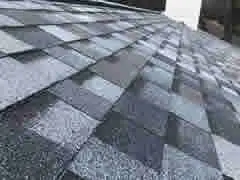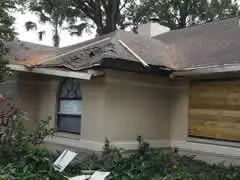How to Replace Fascia Trim
Replacing fascia trim means removing old material and putting in new. First, check the wood for rot and measure its length. Buy new fascia boards made of wood or polyvinyl chloride, plus nails and caulk at a store. Remove the rain gutter to reach the fascia.
Next, take off the old board, using a pry bar if needed to loosen roofing nails. Cut the new fascia to fit well. Nail the new board on tight and seal edges with caulk. Put the gutter back up when done. Call a roofer if working high up feels unsafe; roof work can be dangerous.
What is Fascia Trim and Why is it Important?
Fascia trim is the long, straight board that runs along the lower edge of the roof, and it is important because it protects the roof and the house from water damage. It caps the ends of the roof rafters to give the roof a finished look. Rain gutters are often attached to the fascia. The fascia also keeps pests from getting into the attic. Fascia trim is often made of wood, but it can also be made of vinyl or aluminum. Replacing damaged fascia can prevent more costly repairs to the roof and structural system of your home. Sealant and caulk help protect the fascia from the elements.
What Tools and Materials Do You Need to Replace Fascia?
The tools and materials you need to replace fascia include a variety of items for removal, measurement, cutting, and installation. You’ll need a pry bar to remove the old fascia carefully, especially around shingles and gutters. A measuring tape helps ensure accurate cuts for the new fascia board. Use a saw, such as a circular saw or hand saw, to cut the new fascia to the correct length.
For installation, gather nails or screws designed for exterior use; these resist rust. A nail gun or drill will speed up the attachment process. Don’t forget safety glasses and gloves to protect yourself. Sealant or caulk prevents water damage where the fascia meets the roof or siding. Consider having extra roof shingles on hand if any get damaged during the process.
How to Inspect and Measure Fascia Boards and Rafters for Damage?
You inspect and measure fascia boards and rafters for damage by looking for common signs of wear and tear. First, check for any visible rot or decay in the wood. Probe the wood with a screwdriver; if it sinks in easily, the wood is likely rotten. Also, look for water stains, which can mean leaks are present. Check for missing or damaged sections of the fascia board too. Examine the rafters for sagging or bends, which could show structural problems. Measuring any sagging can help figure out the extent of the issue. Finally, look for signs of pests, like holes from insects.
How to Remove Old Fascia, Gutters, and Roofing Nails?
Detach gutters from the fascia first. These often use brackets; unscrew them to remove the gutter. Then, gently pry off the fascia board, piece by piece, using a pry bar. Work carefully to avoid roof shingle damage. Lift shingles if you need to reach roofing nails. Pull any nails left in the rafters using a nail puller or hammer. If you find caulk or sealant, cut through it with a utility knife to make removing the fascia easier. Removing rotted wood fascia simplifies replacement.
How to Cut and Prepare the New Fascia Board for Installation?
You cut and prepare the new fascia board for installation by measuring, cutting, and sealing it. First, measure the area where the old fascia was to determine the length needed. Then, cut the new fascia board to the measured length using a saw. It’s best to use a miter saw for accurate cuts.
After cutting, apply sealant to all cut edges of the wood fascia board. This protects the wood from moisture. For polyvinyl chloride (PVC) fascia, sealing isn’t needed since it’s water-resistant. Ensure the new fascia matches the dimensions of the old one for a proper fit. Pre-drill holes for nails to prevent splitting the wood during installation.
How to Install New Fascia Trim: A Step-by-Step Guide
You install new fascia trim by following these steps. First, measure the area where the old fascia was. Buy new fascia boards that match this measurement. Remove the old fascia carefully, using a pry bar if needed. Be sure to remove any nails or screws. Check the wood underneath for rot, and replace it if needed. Next, apply caulk to the back of the new fascia board. This sealant helps protect against water. Attach the new fascia board using nails or screws. Make sure the new fascia is level. Finally, add a rain gutter to the fascia if needed. This will help direct water away from your roof and attic.
How to Seal and Caulk Fascia for Weather Protection?
Seal and caulk fascia to protect it from weather and prevent water damage. This also keeps pests out. Use exterior-grade, paintable caulk for best results.
First, clean the area. Remove loose debris, old caulk, and dirt to ensure the caulk bonds well. Next, apply a bead of caulk where the fascia meets the soffit, siding, or roof shingles. Smooth the caulk with a wet finger or tool for a clean look.
Regularly inspect your fascia, especially around gutters, twice a year. Reapply caulk where needed to address damage promptly. This protects your home from water and related problems.
Fascia Materials: Wood, Vinyl, UPVC – Which Type is Best for Your Needs?
Fascia materials include wood, vinyl, and UPVC; the best depends on your budget, climate, and look. Wood gives a classic style but needs paint often and rots if not cared for, costing more over time. Vinyl and UPVC resist water better and need less upkeep, saving time. UPVC costs more at first but lasts longer than vinyl on your roof and rain gutter system. Choose vinyl if you want a cheap, low-work option. Pick UPVC if long life and strong build matter most. Regular caulking helps any material last longer.
Repair or Replace: When is Fascia Repair Sufficient?
Fascia repair is sufficient when the damage is minor and localized. You can repair fascia if there are small cracks, holes, or areas of rot that do not affect the structural integrity of the wood. If the damage is extensive, replacement of the fascia board is necessary.
Consider the age of the fascia; older fascia may be more prone to future problems, even after a small repair. Check for moisture damage, which can spread and weaken the wood. Addressing issues early can prevent bigger problems with your roof and rain gutter system later. Caulking and sealant can help protect repaired areas.
What are Common Mistakes to Avoid During Fascia Replacement?
Common mistakes to avoid during fascia replacement include using the wrong size of fascia, not sealing the wood properly, and ignoring the roof shingles. Using fascia boards that don’t fit well can cause problems later. It is important to measure correctly before you cut. Failing to seal the wood lets water damage the new fascia. This can cause rot and attract pests. Also, be careful not to damage the roof shingles when you remove the old fascia and install the new one. Damaged shingles can lead to leaks in your attic. Make sure you use caulk to seal gaps.
How Much Does Fascia Trim Replacement Cost, Including Labor?
Fascia trim replacement costs $6 to $20 per linear foot, labor included. Material choice, like wood or polyvinyl chloride (PVC), affects this price. Labor covers removal of the old fascia, surface preparation, and new trim installation. Expense increases if rain gutter systems need removal and reinstallation. For a specific assessment, get quotes from local roofers. Complexity influences pricing; shingles might need temporary lifting. Surface sealant and caulk add to material costs. UPVC or vinyl provides durable options. Consider these factors for budgeting.
When Should You Hire a Roofer for Fascia Replacement or Repair?
Hire a roofer for fascia replacement or repair if damage or rot is present, or the job seems too difficult. Call a roofing expert if fascia feels soft or crumbles, or shows water damage. A roofer can help if you fear heights or lack tools. Ignoring damaged fascia leads to roof leaks and structural damage. Early action with a professional avoids bigger issues. Gutters and shingles might need removing. Consider a pro for replacing wood or vinyl fascia, especially near the roof. This saves money long-term.
How to Maintain Fascia Trim to Prevent Future Problems Like Rot and Water Damage?
You can maintain fascia trim to prevent future problems like rot and water damage by regularly inspecting it and addressing any issues promptly. Look for signs of damage, such as cracks, peeling paint, or soft spots, especially after storms. Seal any cracks with caulk to keep water out, costing about $5 to $10 per tube.
Keep gutters clean so water flows away from the fascia; professionals often charge $100-$250 for gutter cleaning. Consider using a sealant designed for exterior wood or polyvinyl chloride (PVC) to protect the fascia from moisture. Applying a fresh coat of paint every few years also helps protect the wood from the elements.



